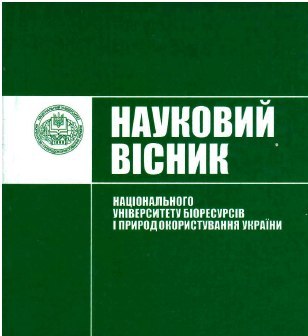On the status of Canadian English pronunciation
DOI:
https://doi.org/10.31548/philolog0(276).2017.018%20-%2024Abstract
This article is an overview of the problem of defining varieties of the English language on the territory of North America. Close inspection of the varieties in Great Britain and the USA reveals that they are essentially different in character. English is different not only between countries, but on the territory of the country, which doesn’t have a unified territorial variant. It is not difficult to establish that the varieties spoken in small areas are local dialects. The status of the other varieties is more difficult to establish. Canadian English contains elements of British English and American English in its vocabulary, as well as many distinctive И?Canadianisms’. However, these distinctions are confined to the articulatory-acoustics characteristics of some phonemes, to some differences in the use of others and to the differences in the rhythm and intonation of speech. The few phonemes characteristic of American pronunciation and alien to British literary norms can as a rule be observed in British dialects. The comparative analysis of the national varieties of English pronunciation shows that they have identical as well as divergent features at all levels of the phonetic system of English: the system of vowel and consonant phonemes, the accentual structure of words and intonation.
The North American accent is that of an educated Central-Eastern variety. Elsewhere in the Eastern USA there are distinctive varieties to be found in New England, New York City and the South-East (with certain south-eastern features).The status of it still needs further investigation.
References
Bailey, Richard W. (2004). American English: Its origins and history. In E. Finegan & J. R. Rickford (Eds.), Language in the USA: Themes for the twenty-first century (pp. 3–17). Cambridge: Cambridge University Press.
Baugh, C. and Cable, T. History of The English Language. N.Y.: Taylor&Francis, 2002.
?Sounding Canadian from Coast to Coast: Regional accents in Canadian English
Boberg, Charles. Ethnic divergence in Montreal English Article•March 2017.The
Canadian Journal of Linguistics
Brogan, H. The Penguin History of The USA. N.Y.: Blackwell Publishers, 1999.
Casselman, Bill. ?Zed and zee in Canada’. Retrieved 2011-06-05.
Chambers, J.K. (2002). Sociolinguistic Theory: Linguistic Variation and Its Social Significance (2nd ed.). Oxford: Blackwell Publishers.
Crystal, D. How Languages Are Works? N.Y.: Penguin Books, 2001.
Crystal, D. The English Language. N.Y.: Penguin Books, 2001.
Esling, John H. and Warkentyne,Henry J. (1993). ?Retracting of /æ/ in Vancouver English.’
Finegan, Edward. (2006). English in North America. In R. Hogg & D. Denison (Eds.),A history of the English language(pp. 384–419). Cambridge: Cambridge University Press.
.Labov, William; Sharon Ash; Charles Boberg (2006).The Atlas of North American English. Berlin: Mouton de Gruyter. ISBN 3-11-016746-8.
Boberg, Charles(2006) The Canadian Shift in Montreal; Hagiwara, Robert. (2006) Vowel production in Winnipeg; Roeder, Rebecca V.,
Jarmasz, Lidia (2006) The Canadian Shift in Toronto./ Labov et al.
Nancy, A. D. Stewart, E. T.(1995) American Diversity. N.Y.: Penguin Books,
.Shakhbagova, J. (1982). Varieties of English pronunciation. Moscow: Visshaya Shkola.
Wakelin, Martyn Francis (2008)Discovering English Dialects. Oxford: Shire Publications. p. 4. ISBN 978-0-7478-0176-4.
Wells,G (2006). Accents of English..595.
Downloads
Published
Issue
Section
License
Relationship between right holders and users shall be governed by the terms of the license Creative Commons Attribution – non-commercial – Distribution On Same Conditions 4.0 international (CC BY-NC-SA 4.0):https://creativecommons.org/licenses/by-nc-sa/4.0/deed.uk
Authors who publish with this journal agree to the following terms:
- Authors retain copyright and grant the journal right of first publication with the work simultaneously licensed under a Creative Commons Attribution License that allows others to share the work with an acknowledgement of the work's authorship and initial publication in this journal.
- Authors are able to enter into separate, additional contractual arrangements for the non-exclusive distribution of the journal's published version of the work (e.g., post it to an institutional repository or publish it in a book), with an acknowledgement of its initial publication in this journal.
- Authors are permitted and encouraged to post their work online (e.g., in institutional repositories or on their website) prior to and during the submission process, as it can lead to productive exchanges, as well as earlier and greater citation of published work (See The Effect of Open Access).

